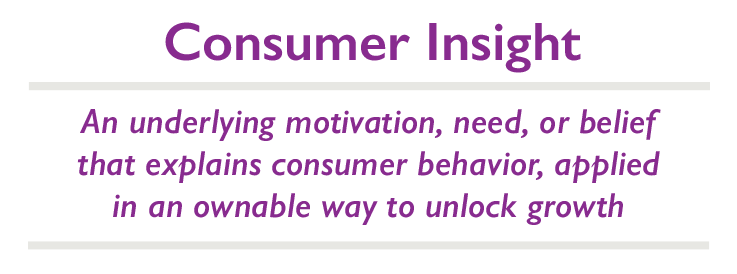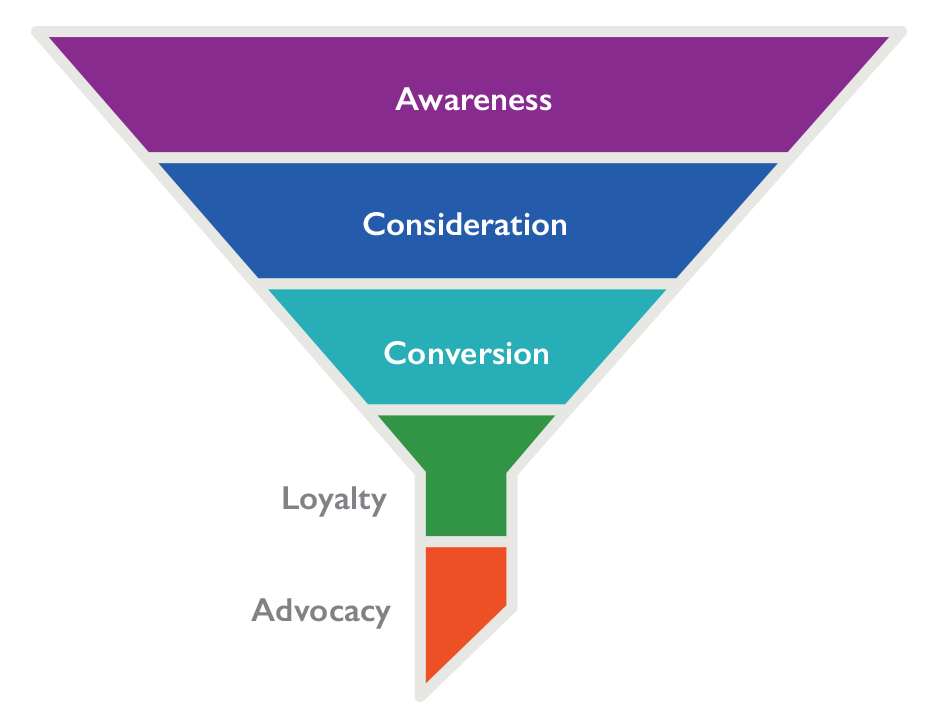by Jennifer Dilley
What is a consumer insight? How do you know when you have found one? What does it look like?
These are questions that every marketer or consumer insights professional gets asked at some point. And while it might be useful to rattle off a definition in an elevator conversation, it is more important to internalize the definition so that when you are conducting consumer research you have a clear understanding of what you are looking for.
Definition of a Consumer Insight
So, what are we looking for? A consumer insight is an underlying motivation or need that explains why a consumer makes a certain decision or behaves in a certain way. But that is not all. When the underlying motivation is uncovered, it is only a consumer insight if it can be applied to a brand in an ownable way to unlock brand growth.
A consumer insight identifies consumers’ beliefs and values that drive their behavior. It provides a deeper understanding of why consumers purchase certain products and dismiss others.

Consumer Insights vs Facts
Be careful to distinguish an insight from a fact. There is a difference. A consumer fact is just a statement about a consumer behavior or the marketplace. Here are examples of facts:
- Luxury cars account for 17.7% of all vehicle sales in the United States.
- Luxury cars are often equipped with the latest safety features, technology integrations, and performance components.
- The average transaction price for an entry-level luxury car is about $40,000. The average price for a flagship luxury sedan is closer to $100,000.
These facts are interesting and might be relevant to a brand, but they don’t explain why people behave the way they do.
Consumer Insights Highlight Pain Points and Opportunities
Consumer Insights shed light on pain points for consumers and uncover potential opportunities for brands. As an example, an insight from the findings above could be articulated as, “People want a luxury car to signal their lifestyle and financial success.” This is an insight because it taps into consumers’ underlying motivation (often more emotional that functional) and a pain point, resulting in an opportunity.
- Motivation: People that have achieved financial success want to feel that sense of achievement and pride in their everyday lives.
- Pain Point: The initial cost and maintenance fees for a luxury car are expensive and often cost prohibitive, even for those who have achieved some level of affluence.
- Opportunity: Brand X should build car models that fall between luxury and mid-size car classes to accommodate varying levels of affluence.
Consumer Insights Must be Ownable
A consumer insight is only valuable if it is relevant and can be applied back to a brand in an ownable way. If competitive brands are already addressing a specific consumer need and motivation, then the insight is true but not necessarily ownable for a brand. A good insight will inspire ideas and communications that allow the brand team to communicate brand benefits in a unique way.
Note that an insight might link to a category benefit, but it can still be ownable by a brand, if it has not been adopted by the competition.
Consumer Insights Unlock Growth
The job of a consumer insight is to highlight the possibility for an emotional connection between a product/service and the consumer. It provides brand teams with the context that explains how the product can be relevant in consumers lives. Understanding the emotional connection between consumers motivations/needs and the brand benefits can fuel creative marketing ideas that will capture the attention and convert consumers along the marketing purchase funnel.

Consumer Insights May Not be Overtly Articulated by Consumers
Note that consumer insights are deeper motivations that are quite often subconscious. In fact, a good consumer insight is often described as an “Aha moment.” Good insights tend to be simple human truths that we don’t discuss, but are still there, right under our noses. Because of this, specialized consumer learning techniques are needed. Ethnography, in-context observation, consumer diaries, and projective techniques like mood boards and semiotics, are required to dig beneath the surface of what consumers say to uncover their actual motivations. This may also require us to look beyond consumers values and lifestyle to macro trends – demographic, economic, pop culture, health, and technology trends that are also influencing consumer behavior.
Tying back to the luxury car example, consumer perceptions are also influenced by economic and geo-political fluctuations such as, inflation, higher gas prices, climate change and the transition to electric vehicles. This can subconsciously change consumer beliefs and behaviors, leading to new consumer insights.
Consumer Insights Summary
The best consumer insights:
✔ Explain WHY? By identifying and articulating an underlying motivation, need or belief that is driving consumer behavior
✔ Address a pain point or point of tension
✔ Are ownable when applied to a brand/product/service
✔ Unlock opportunities, inspiring creative marketing ideas that fuel business growth
To discuss consumer insights with experts from SIVO, please reach out to our team at Contact@SIVOInsights.com





